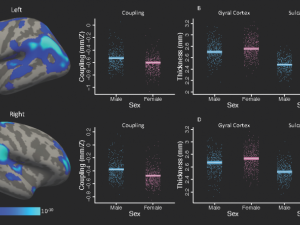Cortical Coupling: A New Way to Investigate Neuropsychiatric Disorders?

This study aimed to describe how two characteristics of the human brain’s surface change together spatially during adolescent development. The investigators created a method called “cortical coupling,” which measures how the relationship between the thickness of the cortex and the folds of its surface varies by location.
They quantitatively replicated findings from early researchers, which demonstrate the brain’s gray matter is thinner in sulci than gyri. Not only does this relationship vary considerably across the surface of the brain; it is strongest in the parts that are important for higher-order cognition. Furthermore, the findings demonstrate that the spatial relationship becomes more robust throughout adolescence: sulcal cortex becomes thinner and gyral cortex thickens, with age.
These divergent patterns in cortical topology show the new method's potential for investigating neuropsychiatric disorders, which are increasingly conceptualized as disorders of brain development. We can apply this knowledge to chart normal cortical development and new biomarkers of psychopathology, as well as to understand differences between adolescent males and females. Software developed by the team for estimating coupling is freely available and integrable with the industry-standard FreeSurfer software suite.